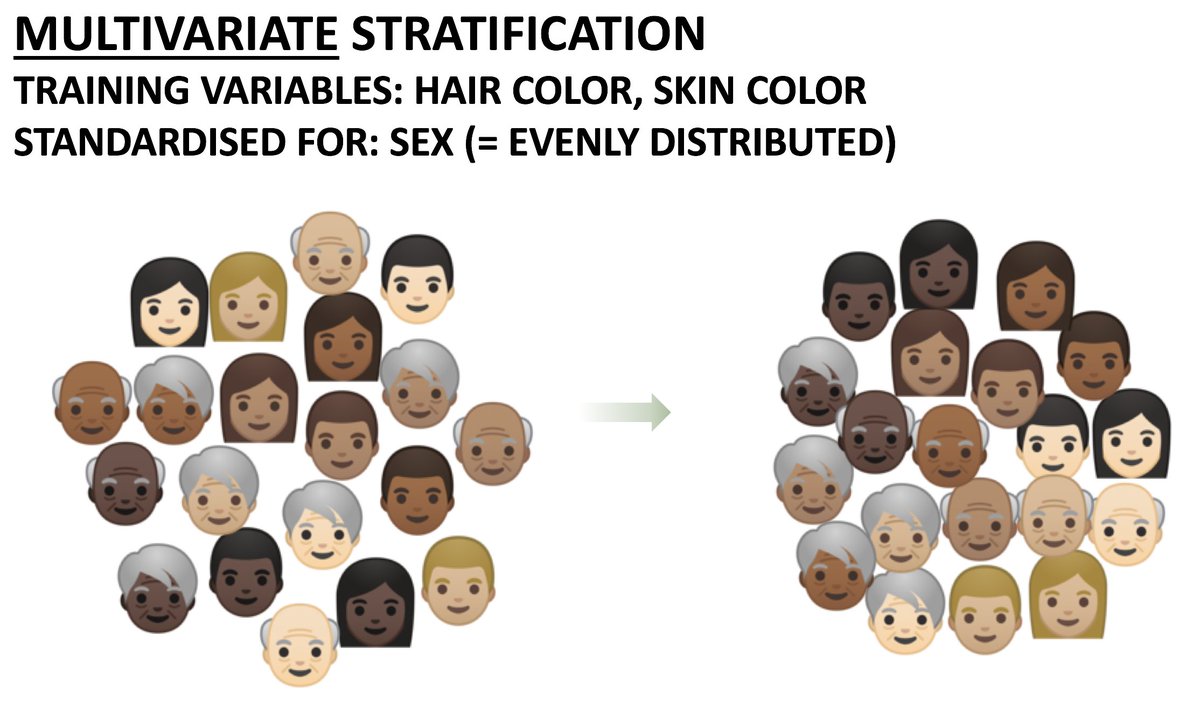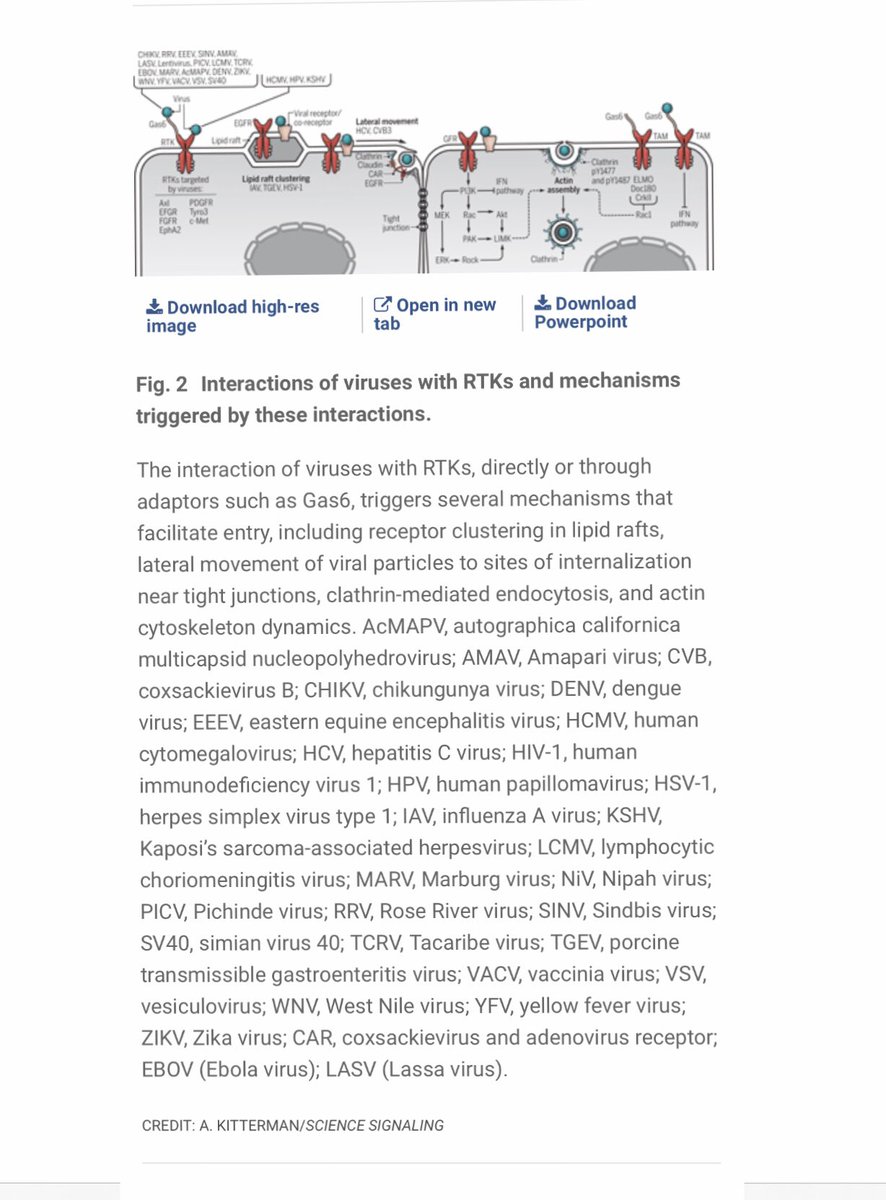Discover and read the best of Twitter Threads about #Lipid
Most recents (11)
26/50 The detected "SV40 promoter with 72bps indel" is a "nuclear localization signal" that means either the #plasmid or one of its expressed proteins can be transported into host cell nuclei,...
27/50 ...where the host DNA is found, creating an open question of whether host DNA interaction will occur and to what effect e.g. integration with human DNA. anandamide.substack.com/p/sequencing-o…
28/50 Potential effects of plasmid #contamination in vivo? Notable, five chemistry professors from German universities have been studying #Pfizer #BionTech's covid vaccine. They addressed some questions to the company. Where does the gray tone come from?
berliner-zeitung.de/gesundheit-oek…
berliner-zeitung.de/gesundheit-oek…
#GO #GraphiteOxide "#GrapheneOxide"
#Toxicity: physical #destruction, #oxidativestress, #DNA damage, #inflammatory response, #apoptosis, #autophagy and #necrosis.
en.wikipedia.org/wiki/Graphite_…
Pat: #CN112220919A for #2019nCov '#Vaccines' #Graphene Lipid Nanotech

#Toxicity: physical #destruction, #oxidativestress, #DNA damage, #inflammatory response, #apoptosis, #autophagy and #necrosis.
en.wikipedia.org/wiki/Graphite_…
Pat: #CN112220919A for #2019nCov '#Vaccines' #Graphene Lipid Nanotech

#Graphene in '#vaccines.'
Who is Pablo Campra #Madrid, the scientist who directs the research? | 07 Jul 2021
- Pablo Campra Madrid , a graduate in biology, a doctorate in chemical sciences and a full professor at the University of Almería #SoyUAL

Who is Pablo Campra #Madrid, the scientist who directs the research? | 07 Jul 2021
- Pablo Campra Madrid , a graduate in biology, a doctorate in chemical sciences and a full professor at the University of Almería #SoyUAL

Recent progress of #GrapheneOxide as a potential '#vaccine' #carrier and #adjuvant | Aug 2020
- functionalized graphene oxide serves as a vaccine #carrier and shows significant adjuvant activity in activating cellular and humoral immunity.

- functionalized graphene oxide serves as a vaccine #carrier and shows significant adjuvant activity in activating cellular and humoral immunity.

Join us tomorrow for the launch of a new #accredited #tweetorial on the primary care management of #hyperlipidemia covering the relationship between #LDL_C & major #CV events, CV risk categories, recommended LDL-C treatment goals, & oral therapeutic options for lipid-lowering
1) Welcome to a new #tweetorial on the primary care management of #hyperlipidemia. Our returning @cardiomet_CE expert author is dedicated #SoMe education advocate Kevin Fernando, FRCGP FRCP Edin, FAcadMEd MSc Diabetes @drkevinfernando
2a) This is the next instalment of @cardiomet_CE's 10-part #tweetorial foundational series on #lipid management! It is accredited for #CME/CE and intended for #physicians #physicianassociates #nurses #nursepractitioners #pharmacists.
#FOAMed @MedTweetorials #cardiotwitter
#FOAMed @MedTweetorials #cardiotwitter
1) Welcome to @cardiomet_CE's new series on #lipid management! This is a 10-#tweetorial program, all #accredited, that will cover it all. Our first expert author is Paul Thompson MD @PaulDThompsonMD, esteemed #cardiologist from @hartfordhosp @UConn Med & now @MGHHeartHealth ! 

2) This #tweetorial, accredited for #CME/CE and intended for #physicians #physicianassociates #nurses #nursepractitioners #pharmacists is supported by an educational grant from Esperion Therapeutics. See faculty disclosures at cardiometabolic-ce.com/disclosures/.
3) @PaulDThompsonMD took on education re mechanisms & use of ezetimibe & bempedoic acid. He proposes a case: 45 ♂️ w/history of inferior wall #MI treated with primary angioplasty.
1) Welcome to @cardiomet_CE's series on #lipid management! This is a 10-#tweetorial program, all #accredited, that will cover IT ALL. The expert author for this module is Robert Giugliano MD @ @rgiugliano, renowned #cardiologist from @BrighamWomens & @harvardmed ! 

2) This #tweetorial, accredited for #CME/CE and intended for #physicians #physicianassociates #nurses #nursepractitioners #pharmacists is supported by an educational grant from Esperion Therapeutics. See faculty disclosures at cardiometabolic-ce.com/disclosures/.
3) @rgiugliano is going to discuss care of patients taking #statins who still have residual atherosclerotic cardiovascular disease #ASCVD risk.
#WeekendLecture
Intracranial Atherosclerotic Disease #ICAD
#ICAD leads to changes ranging from minor wall thickening to #hemodynamically significant luminal stenosis and is one of the most #common causes of #stroke worldwide
ahajournals.org/doi/10.1161/CI…
🧵
Intracranial Atherosclerotic Disease #ICAD
#ICAD leads to changes ranging from minor wall thickening to #hemodynamically significant luminal stenosis and is one of the most #common causes of #stroke worldwide
ahajournals.org/doi/10.1161/CI…
🧵
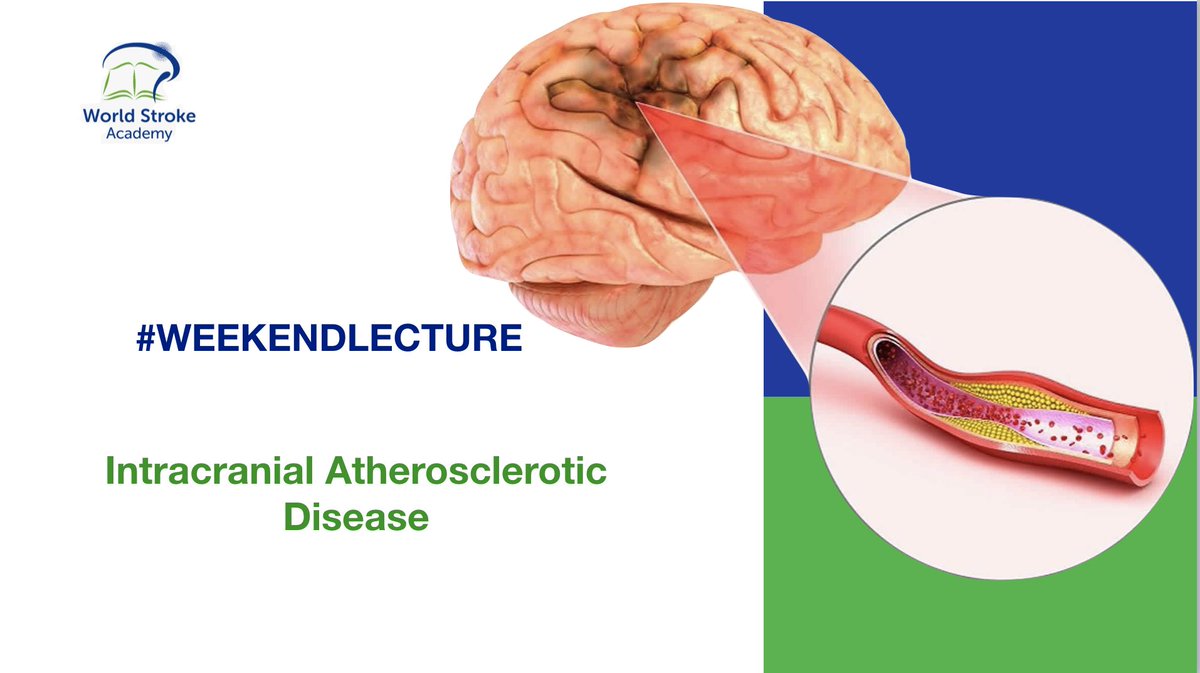
#WeekendLecture
#ICAD
✅10% of stroke, based on autopsy studies
bit.ly/3v6Lhrd
✅More prevalent in #African Americans, #Hispanics, and #Asians as compared with whites
bit.ly/3AuSiDt
Other risk factors in table
#ICAD
✅10% of stroke, based on autopsy studies
bit.ly/3v6Lhrd
✅More prevalent in #African Americans, #Hispanics, and #Asians as compared with whites
bit.ly/3AuSiDt
Other risk factors in table

#WeekendLecture
#ICAD
In postmortem studies
👉degree of luminal #stenosis
👉% of the plaques containing >40% #lipid area
👉prevalence of intraplaque #hemorrhage, #neovasculature and #thrombus,
were higher in those #plaques associated with #infarct
🔹karger.com/Article/Abstra…
#ICAD
In postmortem studies
👉degree of luminal #stenosis
👉% of the plaques containing >40% #lipid area
👉prevalence of intraplaque #hemorrhage, #neovasculature and #thrombus,
were higher in those #plaques associated with #infarct
🔹karger.com/Article/Abstra…

1/ Initial #Lipid thoughts...
(@KevinH_PhD's new study - osf.io/preprints/nutr…)
Of course, the panels follow the pattern I'd speculate given the Lipid Energy Model (see CholesterolCode.com/model), but per the model, body fat/metb status is very relevant context, so note bf%...
(@KevinH_PhD's new study - osf.io/preprints/nutr…)
Of course, the panels follow the pattern I'd speculate given the Lipid Energy Model (see CholesterolCode.com/model), but per the model, body fat/metb status is very relevant context, so note bf%...

2/ This isn't a critique on their study design or its population. But I'd bet if this same study were performed on average or leaner/athletic types, we'd see a more pronounced shift in lipid values for each diet. (ie. See Volek and Phinney typical study population for comparison) 
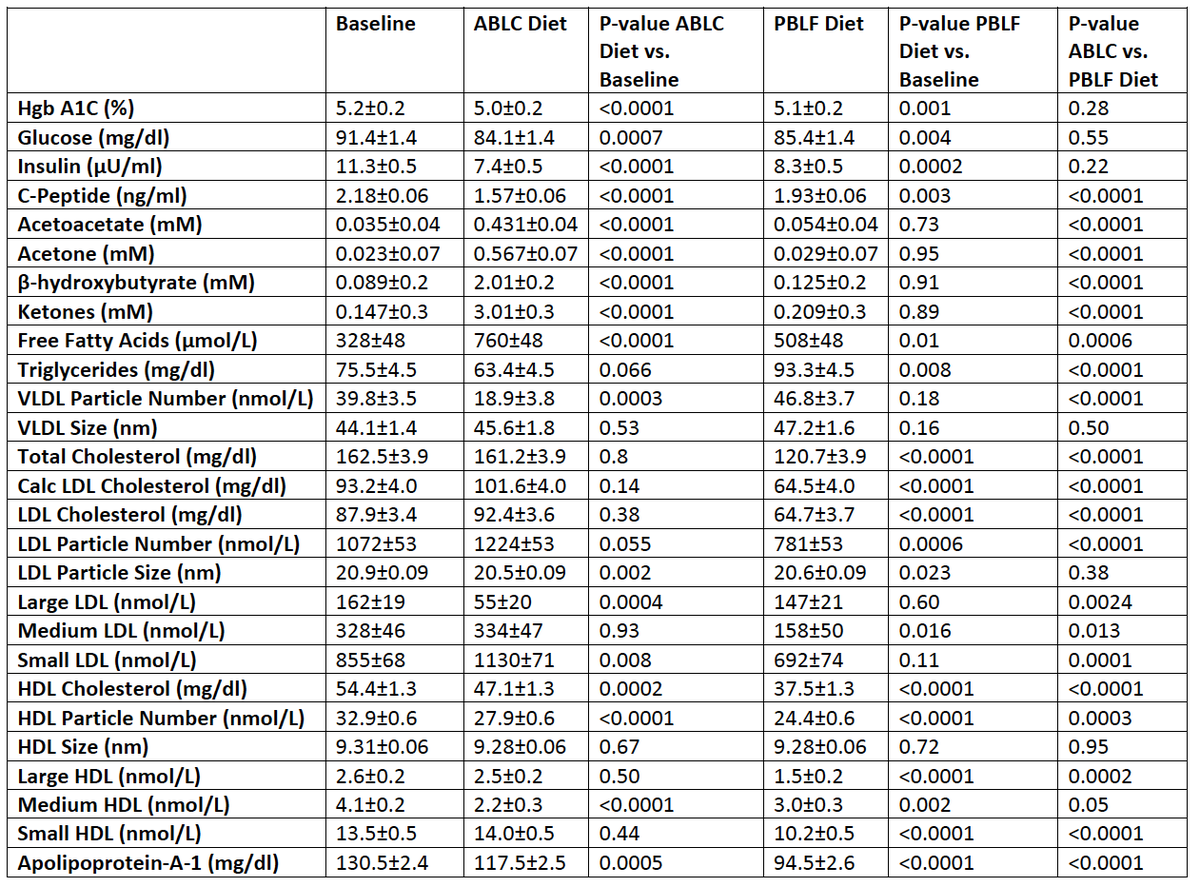
3/ Now, what I *do* want to highlight is the Free Fatty Acids going up much more with ABLC Diet vs the PBLF diet
Baseline 328±48
ABLC 760±48
PBLF 508±48
Yet Triglycerides fell for ABLC, increased for PBLF
Baseline 75±4.5
ABLC 63.4±4.5
PBLF 93.3±4.5
Why is this so important?...
Baseline 328±48
ABLC 760±48
PBLF 508±48
Yet Triglycerides fell for ABLC, increased for PBLF
Baseline 75±4.5
ABLC 63.4±4.5
PBLF 93.3±4.5
Why is this so important?...
Study finds a “striking buildup of lipid droplets in microglia w/ aging in mouse/human #brains.” The cells, called ‘lipid-droplet-accumulating #microglia (LDAM), are defective in phagocytosis, produce high levels of ROS + secrete proinflammatory cytokines: nature.com/articles/s4159… 


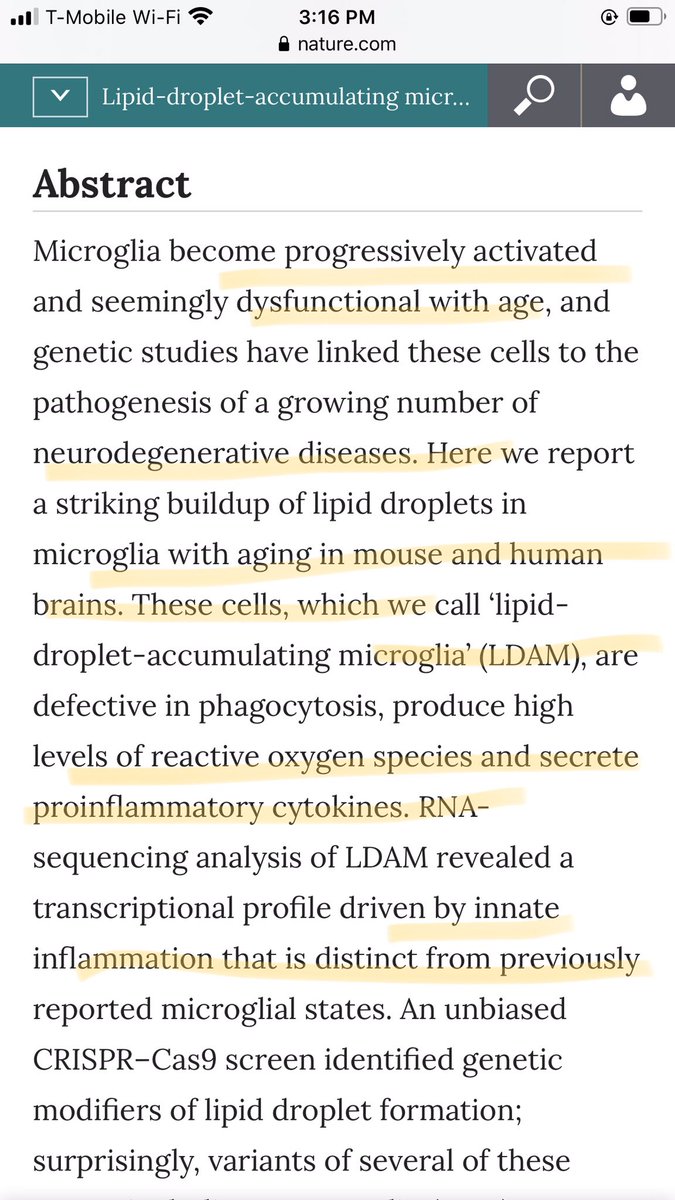
2/ Worth noting that persistent #viruses target #lipid signaling, synthesis + metabolism to remodel host cells like microglia into an environment optimal for their replication 👉 Indeed viral infection of LDAM cells cld explain ROS + proinflammatory state: ncbi.nlm.nih.gov/pmc/articles/P… 



3/ Or since LPS induced lipid formation in the study, cld bacterial infection be involved? (ncbi.nlm.nih.gov/pmc/articles/P…) 👉 Especially w/ more teams reporting bacteria inside astrocytes/glia in the brain? (sciencemag.org/news/2018/11/d…) Any thoughts @wysscoray @CarolynBertozzi?
Check out our latest paper on @biorxivpreprint!
Phosphorylation of the overlooked #tyrosine 310 regulates the structure, #aggregation, and #microtubule- and #lipid-binding properties of #Tau
biorxiv.org/content/10.110…
Short #thread!
#AcademicTwitter #biochemistry #threadstory
Phosphorylation of the overlooked #tyrosine 310 regulates the structure, #aggregation, and #microtubule- and #lipid-binding properties of #Tau
biorxiv.org/content/10.110…
Short #thread!
#AcademicTwitter #biochemistry #threadstory
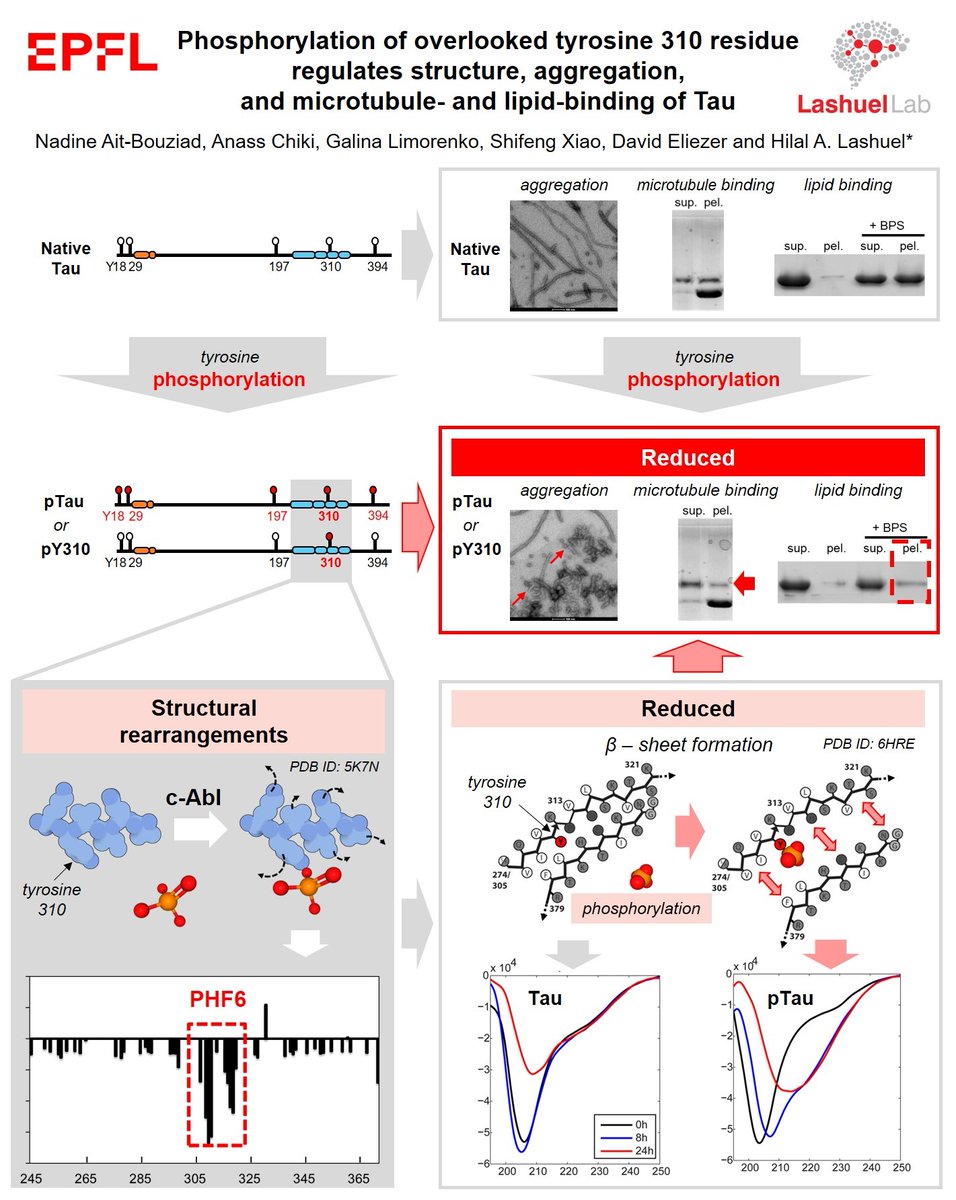
Tau misfolding and aggregation are implicated in tauopathies such as #Alzheimers and #PSP. Tau is extensively post-translationally modified and aberrant pattern of PTMs are found in disease. Tyrosine PTMs have received the least attention, especially Y310.
Tau has 5 tyrosines, and Y310 is in the crucial position within the aggregation-prone MT- and lipid-binding repeat domain. It compacts and folds into beta-sheet structure. We asked:
How would addition of bulky negatively charged phosphogroups to tyrosines impact Tau properties?
How would addition of bulky negatively charged phosphogroups to tyrosines impact Tau properties?
Our latest paper fresh out in @ATHjournal! We asked: "If we used an #AI algorithm to group individuals based on similar blood profile of 44 #lipid measurements, could we improve coronary #heartdisease risk prediction?" Turns out: no.
Thread! 🚨 (1/13)
atherosclerosis-journal.com/article/S0021-…
Thread! 🚨 (1/13)
atherosclerosis-journal.com/article/S0021-…
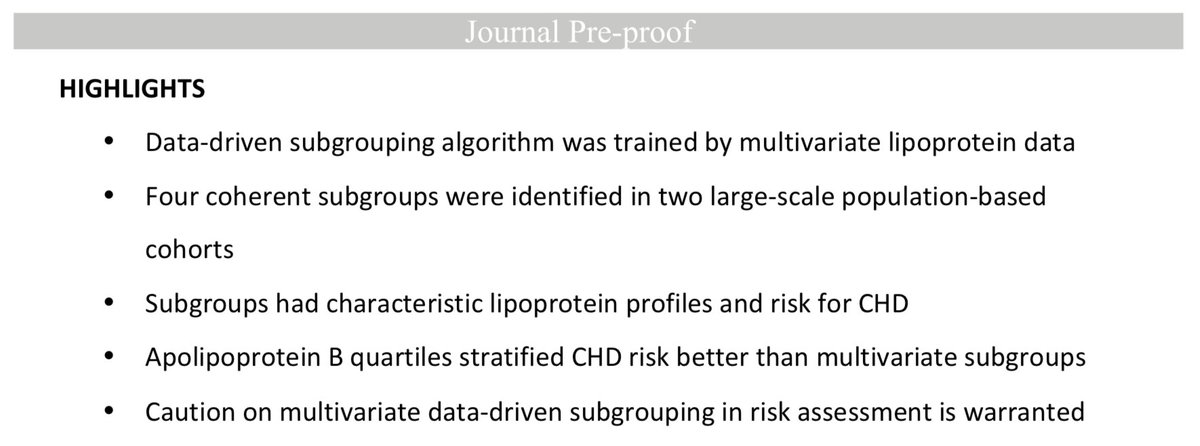
We looked to see if we could detect subgroups in the population that would have a) similar blood profiles across 14 lipoprotein subclasses and b) possible differences in CHD risk. The algorithm we use is called a self-organising map (SOM)
See: academic.oup.com/ije/article-ab… (2/13)
See: academic.oup.com/ije/article-ab… (2/13)
😮! These findings significantly expand on a central mechanism by which persistent #pathogens drive chronic disease 👉 Namely, the ability of intracellular pathogens to dysregulate host receptor actvity in a manner that alters downstream pathway signaling: stke.sciencemag.org/content/12/599… 



